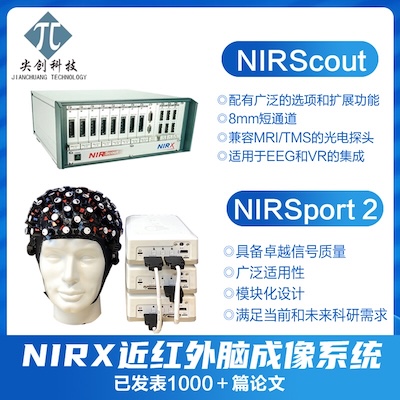Some noise is easy to detect – simply plotting the time courses of NIRS signal, you will find the noise so out of range and you will discard the data. However, I find in some instances the noise level seems to be in the normal range but the data should be discarded based on a new criterion.
This criterion is the correlation between oxy and deoxy-Hb. oxy and deoxy-Hb should be negatively correlated most of the time. If you plot a running correlation you normally see fluctuations close to -1. However, when you find the correlation is actually equal to 1 for all the time points, there must be something wrong. In this case, you should discard the data – even though the original signal may seem normal.
This demonstrates the utility of using correlation between oxy and deoxy Hb in NIRS data analysis. We previously had used this correlation to improve signal quality. Check out our paper.
If you find something perfect, be careful.


Dear Xu:
I found your ideas posted really interesting and helpful.
On telling the bad signals, you mentioned the HBO and HB should always be negatively correlated. Will it still be the case if the brain is not activated on that site?
Hope to hear your reply!
Thanks!
@Zoe
Yes – at least for typical adults.
Hello Xu,
I have home made single channel cw-fNIRS device. I’m trying to manually calculate oxygenation from my data with OriginPro. So far I have trouble with attenuation A, I use equation A=log(1-(wavelength amplitude / wavelength baseline). The problem is, I almos always get this (wavelength amplitude / wavelength baseline) more than 1, therefore my calculation become useless. Could you suggest where to look for detaled information about it, or how to solve it ?? Now I just switch them like this (wavelength baseline / wavelength amplitude) to get some kind of results.
I would be were thankfull,
Good luck.
Hi Xu,
I learnt a lot from your blog. Thank you!
Now I am doing a small project, in which bad channels are often found.
Sometimes in some channels I found that the the HB and HBO are nearly symmetric (inverse to each other, almost the same shape, and signal is very smooth). does it mean that it is also a bad channel?
Thank you, and look forward to your reply!
@Jianyu
It’s hard to say. HbO and HbR are supposed to be negatively correlated (in most cases), but with HbR smaller amplitude. However, usually the raw signal is not very smooth. If you find it too smooth before filtering there might be something wrong.